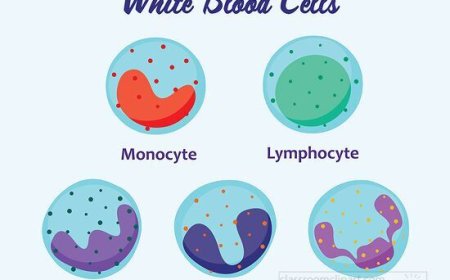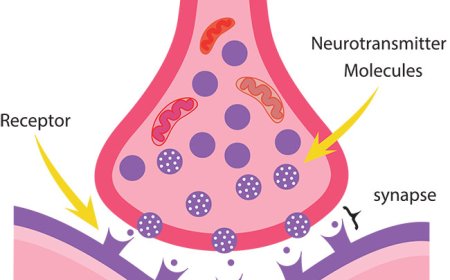The Nervous System: Your Body’s Communication and Control Center
Explore the human nervous system in this detailed educational article for students aged 8–16. Learn how your brain, spinal cord, and nerves work together to control every thought, movement, and reaction. Includes quiz, vocabulary, and a kid-friendly summary.

🧠 The Nervous System: Your Body’s Communication and Control Center
The human nervous system is like the body’s supercomputer and messaging network all in one. It controls everything you do—from blinking and breathing to thinking, feeling, and remembering. Without it, your body wouldn’t know what to do or when to do it.
The nervous system is made up of two main parts: the central nervous system (CNS), which includes the brain and spinal cord, and the peripheral nervous system (PNS), which includes all the nerves that branch out to every part of your body.
🧠 What Is the Nervous System?
The nervous system is a complex network of specialized cells called neurons that send electrical and chemical signals throughout the body. These messages help coordinate actions, respond to the environment, and keep your body systems working together. Whether you’re solving a math problem, tasting pizza, running a race, or touching something hot, your nervous system is in charge—even when you're sleeping!
🧠 Central Nervous System (CNS)
The CNS includes the brain and spinal cord, which are the body’s main control centers. The brain processes information, makes decisions, and sends instructions. The spinal cord acts like a superhighway for nerve signals, carrying messages between the brain and the rest of the body.
Protected by the skull and spine, the CNS handles complex tasks like language, memory, movement, emotion, and also regulates involuntary actions such as heartbeat and breathing.
🦴 Peripheral Nervous System (PNS)
The PNS includes all the nerves outside the brain and spinal cord. These nerves act like wires connecting your CNS to your arms, legs, organs, and skin.
The PNS is divided into two parts:
- Somatic nervous system – controls voluntary movements like waving or jumping.
- Autonomic nervous system – controls involuntary actions like digestion, breathing, and heartbeat.
- Sympathetic – prepares the body for action (stress “fight or flight”).
- Parasympathetic – calms the body and conserves energy.
⚡ How the Nervous System Works
The nervous system uses electricity and chemicals to send signals. Messages travel along neurons as electrical impulses. When a message reaches the end of a neuron, it jumps across a small gap called a synapse using neurotransmitters, which are chemical messengers.
These messages flow in all directions:
- From your senses (eyes, ears, skin) to your brain
- From your brain to muscles and organs
- All around your body to keep systems coordinated
Some nerve signals can travel at over 250 miles per hour—faster than a race car!
🧠 Why the Nervous System Matters
Without the nervous system, your body wouldn’t be able to:
- Feel pain or pleasure
- Move your muscles
- Think or remember
- Hear, see, or smell
- React to danger
- Keep your heart beating or lungs breathing
It controls both voluntary actions (like clapping) and involuntary processes (like blinking). It lets your body and brain talk to each other 24/7.
🛡️ Protecting Your Nervous System
Your nervous system is delicate, so take care of it:
- Wear helmets and seatbelts to protect your brain and spine
- Get enough sleep—your brain needs rest
- Eat healthy foods that fuel your brain (fruits, veggies, omega-3s)
- Exercise regularly to boost brain function
- Stay mentally active by reading, learning, and solving puzzles
🎉 Fun Facts About the Nervous System
- Your brain has around 86 billion neurons.
- Nerve signals can travel at over 250 miles per hour.
- The spinal cord is about 18 inches long.
- You have more nerve endings in your fingers and lips than most other parts of your body.
- Some reflexes happen without the brain—the spinal cord reacts on its own!
🧠 Vocabulary List
- Neuron – a nerve cell that sends messages through the body
- Central nervous system (CNS) – the brain and spinal cord
- Peripheral nervous system (PNS) – all the nerves outside the brain and spine
- Synapse – gap between neurons where messages pass
- Neurotransmitter – chemical messenger used by neurons
- Reflex – automatic response to danger or touch
- Autonomic – involuntary body functions
- Somatic – voluntary actions
- Spinal cord – bundle of nerves linking brain and body
- Signal – an electrical or chemical message in the nervous system
🧒 Kid-Friendly Summary
Your nervous system is your body’s built-in messaging system. It uses your brain, spinal cord, and nerves to help you move, think, feel, and react. It sends signals like electricity and keeps your whole body connected and working—even while you sleep! Take care of it with healthy habits so you can keep learning, moving, and feeling great.



















































